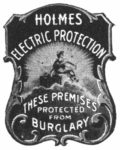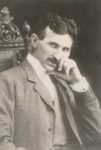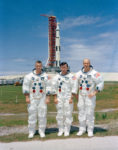The first city-wide fire alarm system goes into operation, Nikola Tesla describes his AC power system and NASA rehearses for the moon landing… It all happened This Week in Tech History.
This week in 1857 – William Channing and Moses Farmer received a patent for a fire alarm telegraph. In this time before telephones, the purpose of the system was to be able to alert firefighters quickly in the event of a fire. Boxes were installed throughout Boston, the first city to adopt the system. In the event of a fire, the box was opened and a crank was turned, sending a signal to a central station which would alert the authorities.
1877 – Edwin Holmes of Boston, MA. Setup the first network of burglar alarms that were monitored by a central station in New York City. He then sent his son to copy that system in Boston. His son realized that they could use existing phone cables to carry the signals, instead of laying their own. This allowed the network to quickly grow to more than 700 burglar alarms. A system that gave rise to the 28 billion dollar industry we know today.
1888 – Nikola Tesla delivered a lecture describing the equipment which will allow efficient generation and use of alternating currents to transmit electric power over long distances. Back in the late 1800s the war of the currents raged on. With Tesla teaming up with George Westinghouse with their AC current, taking on his former employer, Thomas Edison, who was touting his DC, or direct current standard. During this time, Edison even went so far as filming the electrocution of Topsy the elephant, to show the dangers of his rival’s alternating current.
1969 – Apollo 10 is launched. Apollo 10 was essentially a “dress rehearsal” for the first Moon landing, which would take place a couple months later. The mission tested all the components and procedures just short of actually landing. During its return from the Moon, Apollo 10 set a new record for the highest speed attained by a crewed vehicle at 24,791 mph.





